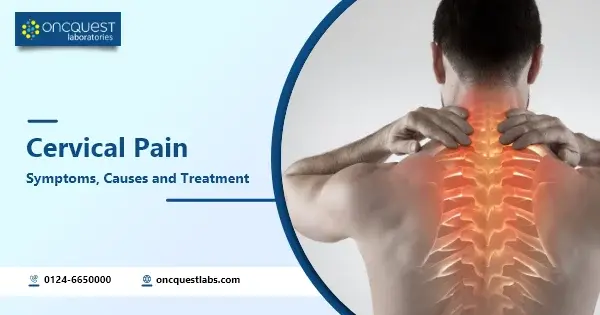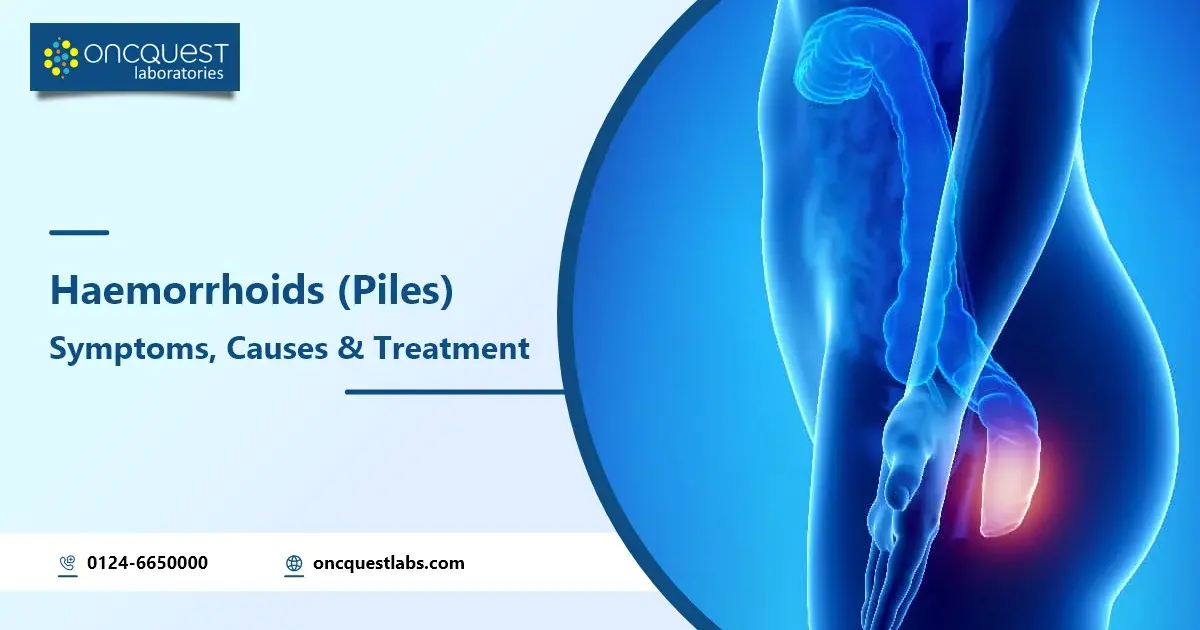Cervical pain, commonly known as neck pain, is a prevalent issue that affects millions of people worldwide. It can range from mild discomfort to debilitating pain and can be caused by various factors. In this blog, we will delve into the world of cervical pain, shedding light on its symptoms, causes, and available treatments. Whether you’re someone seeking relief from nagging neck pain or simply looking to understand this condition better, read on to gain insights that can help you on your journey to a pain-free, healthier neck.
Contents
Symptoms of Cervical Pain
Cervical pain, often referred to as neck pain, can manifest in various ways, and its symptoms can vary from person to person. Here are some common symptoms associated with cervical pain:
1. Neck Discomfort: Persistent discomfort or pain in the neck region is the primary symptom of cervical pain. The intensity of the pain can range from a mild ache to a sharp, stabbing sensation.
2. Stiffness: Many individuals with cervical pain experience stiffness in the neck, which can make it challenging to move the head comfortably. This stiffness often contributes to reduced flexibility.
3. Limited Range of Motion: Cervical pain can restrict your ability to turn your head or tilt it in certain directions. This limitation can affect daily activities like driving and looking over your shoulder.
4. Headaches: Cervical pain frequently leads to tension headaches. These headaches typically start in the neck and radiate to the back of the head and sometimes even the forehead.
5. Tingling or Numbness: Some people with cervical pain may experience tingling or numbness in the arms or hands. This sensation can indicate nerve compression in the cervical spine.
6. Weakness: Weakness in the arms may be a symptom of cervical pain, especially when the nerves in the neck are affected. This weakness can impact your grip strength and dexterity.
It’s important to note that the severity and combination of these symptoms can vary, and the underlying causes of cervical pain may differ from person to person. If you experience persistent or severe neck pain, seeking medical advice is essential for proper diagnosis and treatment.
Cervical Pain Causes
Cervical pain, or neck pain, can have various underlying causes. Understanding these causes is crucial for effective treatment and management. Here are some common causes of cervical pain:
1. Muscle Strain: Overexertion, poor posture, or sudden movements can strain the muscles in the neck, leading to pain. This is a common cause of acute neck pain.
2. Herniated Disc: A herniated or bulging disc in the cervical spine can put pressure on nerves, causing pain, tingling, or weakness in the neck, shoulders, or arms.
3. Osteoarthritis: Degeneration of the cervical spine due to ageing can result in osteoarthritis, which can lead to pain and reduced mobility in the neck.
4. Injuries: Traumatic events, such as car accidents, falls, or sports injuries, can cause damage to the structures of the neck, resulting in pain.
5. Poor Posture: Prolonged periods of poor posture, especially when using electronic devices or working at a desk, can strain the neck and lead to chronic pain.
6. Medical Conditions: Certain medical conditions like fibromyalgia or rheumatoid arthritis can contribute to cervical pain. These conditions often cause widespread pain and may affect the neck.
7. Nerve Compression: Conditions such as cervical stenosis or foraminal stenosis can lead to the compression of nerves in the neck, resulting in pain, tingling, and weakness.
8. Infections: In rare cases, infections of the spine or soft tissues in the neck can cause pain and require prompt medical attention.
9. Tumours: Although uncommon, tumours in the neck or cervical spine can cause pain and other symptoms. These cases usually require thorough evaluation and specialised treatment.
It’s important to note that the specific cause of cervical pain can vary from person to person. Proper diagnosis by a healthcare professional is essential to determine the underlying cause and develop an appropriate treatment plan.
Cervical Pain Treatment
There are various treatment options available for cervical pain, and the choice of treatment depends on the underlying cause, the severity of the pain, and individual factors. Here are some common treatment options for cervical pain:
1. Rest and Self-Care:
– Resting the neck and avoiding activities that worsen the pain can help in the healing process.
– Applying ice to the affected area can reduce inflammation and alleviate pain, especially in the initial stages.
2. Physical Therapy:
– A physical therapist can develop a tailored exercise and stretching program to strengthen neck muscles and improve range of motion.
– Manual therapy techniques, such as massage or manipulation, may be used to reduce pain and improve mobility.
3. Medications:
– Over-the-counter pain relievers like ibuprofen or acetaminophen can offer short-term relief from pain.
– In more severe cases, prescription medications, including muscle relaxants or stronger pain relievers, may be prescribed.
4. Heat Therapy:
– Applying heat, in the form of hot packs or warm towels, can relax tense neck muscles and provide relief.
5. Ergonomic Adjustments:
– Improving posture and ergonomics at work and home can prevent recurrent neck pain. This may include adjusting the height of your computer screen or using an ergonomic chair.
6. Cervical Collars:
– In some instances, a cervical collar may be recommended to support the neck and limit movement while it heals. However, prolonged use is generally discouraged as it can lead to muscle weakening.
7. Injections:
– Corticosteroid injections may be considered for cases with significant inflammation and pain. These injections can provide temporary relief.
8. Acupuncture:
– Acupuncture is an alternative therapy that some individuals find effective for reducing neck pain. It involves the insertion of thin needles into specific points on the body to promote healing and pain relief.
9. Surgery:
– Surgical intervention is typically reserved for severe cases or when conservative treatments fail. Procedures may include cervical discectomy and fusion (ACDF) or cervical disc replacement.
10. Lifestyle Changes:
– Maintaining a healthy lifestyle, including regular exercise, a balanced diet, and stress management, can help prevent and manage cervical pain.
The choice of treatment should be made in consultation with a healthcare professional who can provide a proper diagnosis and recommend the most suitable approach based on your specific condition. Remember that early intervention and a comprehensive treatment plan are key to managing and alleviating cervical pain.
Medical test for cervical pain
Cervical pain, also known as neck pain, can be caused by various underlying factors. To determine the exact cause and severity of cervical pain, medical professionals may recommend a range of tests and examinations. Here are some common medical tests and evaluations that can be used to diagnose cervical pain:
1. Physical Examination: A thorough physical examination by a healthcare provider, which may include assessing your range of motion, muscle strength, and areas of tenderness in the neck and upper back.
2. Medical History: Your doctor will ask about your medical history, including any previous injuries, chronic conditions, and lifestyle factors that may contribute to neck pain.
3. Imaging Studies:
– X-rays: These can provide detailed images of the cervical spine and help identify issues like bone spurs, fractures, or degeneration.
– MRI (Magnetic Resonance Imaging): An MRI scan can offer more detailed images of soft tissues, such as discs and nerves, and is particularly useful for identifying disc herniations or nerve compression.
– CT (Computed Tomography) Scan: CT scans provide detailed cross-sectional images and may be used to assess bone and joint abnormalities in the cervical spine.
4. Electromyography (EMG): An EMG measures electrical activity in the muscles, helping to assess whether there is nerve compression or damage.
5. Nerve Conduction Studies: These tests can help determine if nerves in the cervical spine are functioning properly.
6. Blood Tests: While less common, blood tests may be used to rule out certain medical conditions or infections that could contribute to neck pain.
7. Discography: In some cases, a discography procedure may be performed to evaluate the internal structure of the intervertebral discs and identify pain sources.
8. Bone Density Test: If osteoporosis is suspected as a cause of cervical pain, a bone density test (DEXA scan) may be recommended to assess bone health.
9. Ultrasound: Ultrasound may be used to examine soft tissues and blood flow in the neck, particularly for cases involving soft tissue injuries or inflammation.
It’s important to consult with a healthcare professional to determine which tests are appropriate for your specific situation. They will use these diagnostic tools to identify the cause of your cervical pain and develop an effective treatment plan tailored to your needs.
In Oncquest we offer all the cervical pain tests. If you have any Cervical Pain symptoms, and your doctor has suggested a medical test, Book a lab test at Oncquest.
Conclusion
Cervical pain is a common condition that can significantly impact your daily life. Recognizing the symptoms, understanding the causes, and exploring the available treatment options is crucial for managing and alleviating this discomfort. If you experience persistent neck pain, it is advisable to consult a healthcare professional for a proper diagnosis and personalised treatment plan.
Frequently asked Questions
Q1:What are the main reason of cervical pain?
A1:The main reasons for cervical pain, also known as neck pain, include:
1. Muscle Strain: Overexertion, poor posture, or sudden movements can strain neck muscles.
2. Herniated Disc: Discs in the cervical spine may bulge or herniate, causing nerve compression.
3. Osteoarthritis: Aging can lead to cervical spine degeneration and osteoarthritis.
4. Injuries: Traumatic events, like accidents or falls, can result in neck pain.
These factors often contribute to the development of cervical pain, with the specific cause varying from person to person.
Q2:What does cervical pain feel like?
A2:Cervical pain, or neck pain, can feel different for each individual, but common sensations include:
1. Dull Ache: Many people describe it as a persistent, dull ache in the neck.
2. Stiffness: Neck stiffness that limits movement and flexibility.
3. Sharp or Shooting Pain: In some cases, it may manifest as sharp, stabbing pain, especially with certain movements.
4. Radiating Pain: Pain can radiate from the neck to the shoulders, upper back, or even down the arms.
5. Tingling or Numbness: Some individuals may experience tingling or numbness in the arms or hands, indicating nerve involvement.
The specific feeling of cervical pain may vary depending on the underlying cause and severity of the condition.
Q3:Is cervical pain serious?
A3: Cervical pain, or neck pain, can vary in seriousness depending on the underlying cause. In many cases, cervical pain is not serious and can be managed with rest, lifestyle changes, and conservative treatments. However, it can be serious under certain circumstances, such as:
1. Nerve Compression: If cervical pain is associated with nerve compression, it can lead to more severe symptoms like weakness, numbness, or tingling in the arms and hands, requiring medical attention.
2. Injuries: Traumatic injuries to the neck, such as those from car accidents or severe falls, can lead to serious cervical pain and may need immediate medical evaluation.
3. Chronic Conditions: Underlying chronic conditions like osteoarthritis or degenerative disc disease can result in persistent and potentially serious neck pain that requires ongoing management.
4. Tumors or Infections: In rare cases, tumors in the neck or cervical spine, as well as infections of the spine, can cause serious neck pain and require specialized medical care.
In general, if cervical pain is severe, long-lasting, or accompanied by other worrisome symptoms, it’s essential to seek medical advice to determine the cause and appropriate treatment. Most cases of cervical pain are not life-threatening, but they can significantly impact daily life and should be addressed for improved comfort and well-being.





![Blood Test for Hair Loss [Male/Female] Blood Test for Hair Loss](https://oncquest-blog.s3.ap-south-1.amazonaws.com/blog/wp-content/uploads/2023/12/12044200/Blood-Test-for-Hair-Loss.webp)